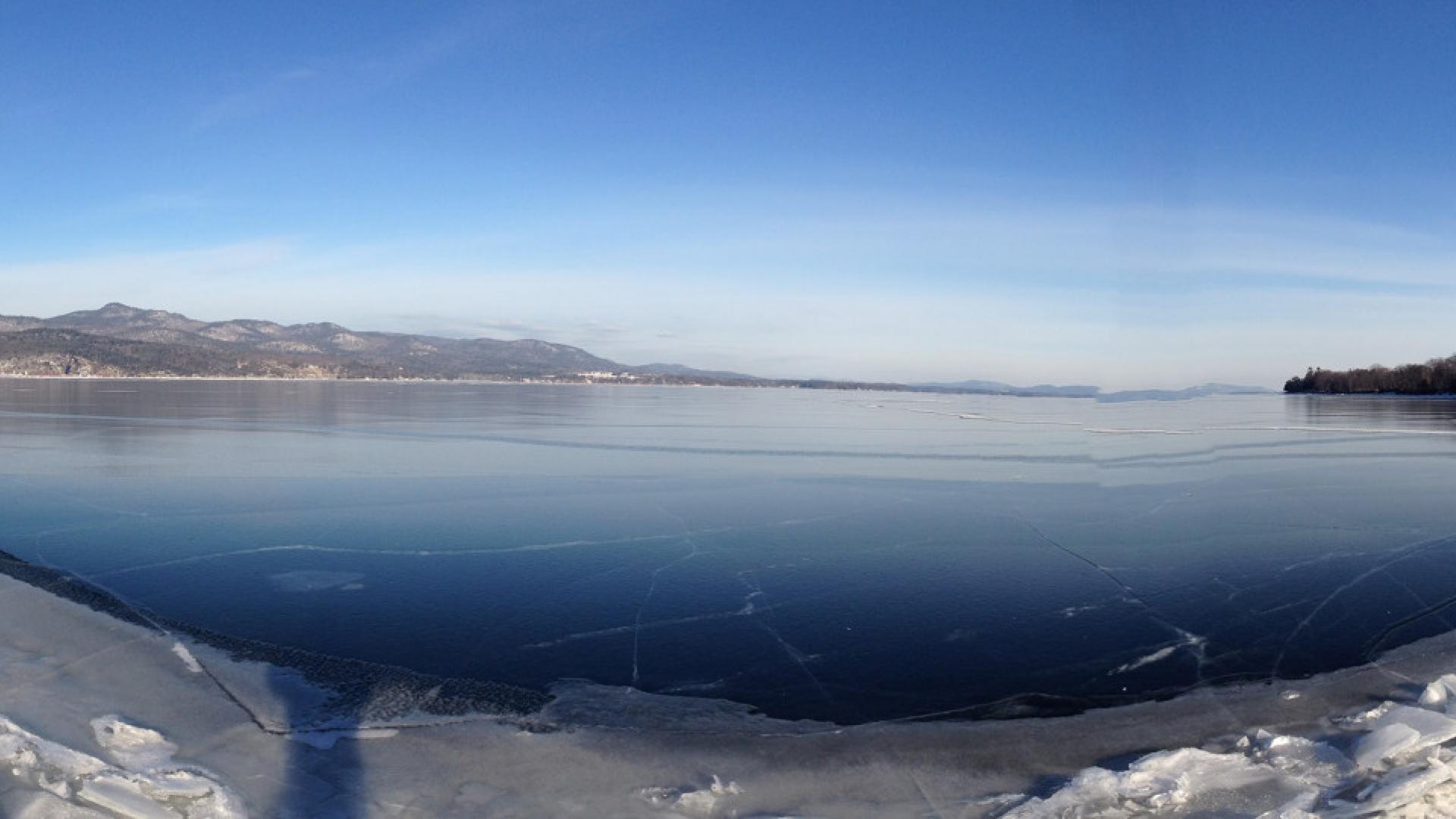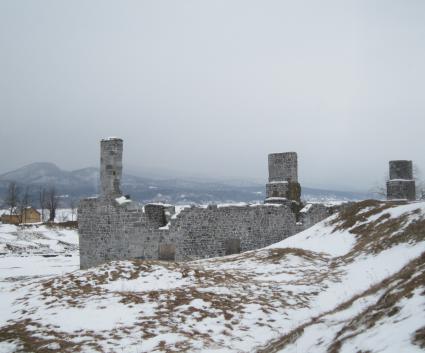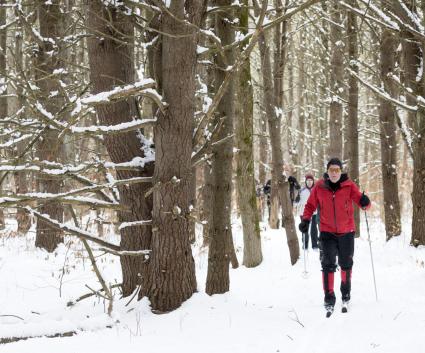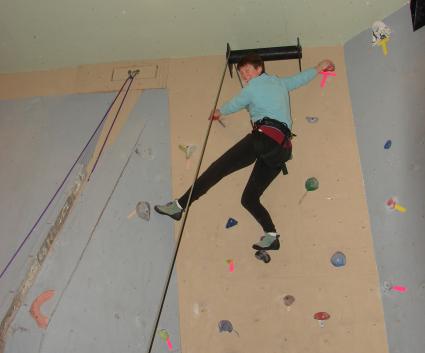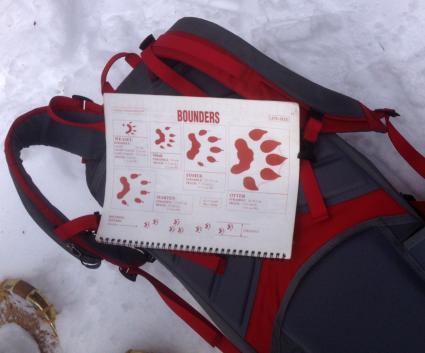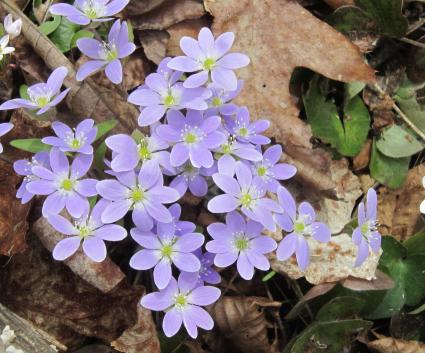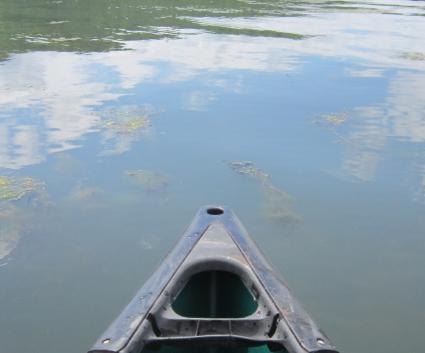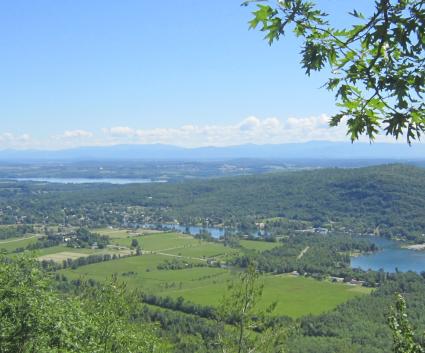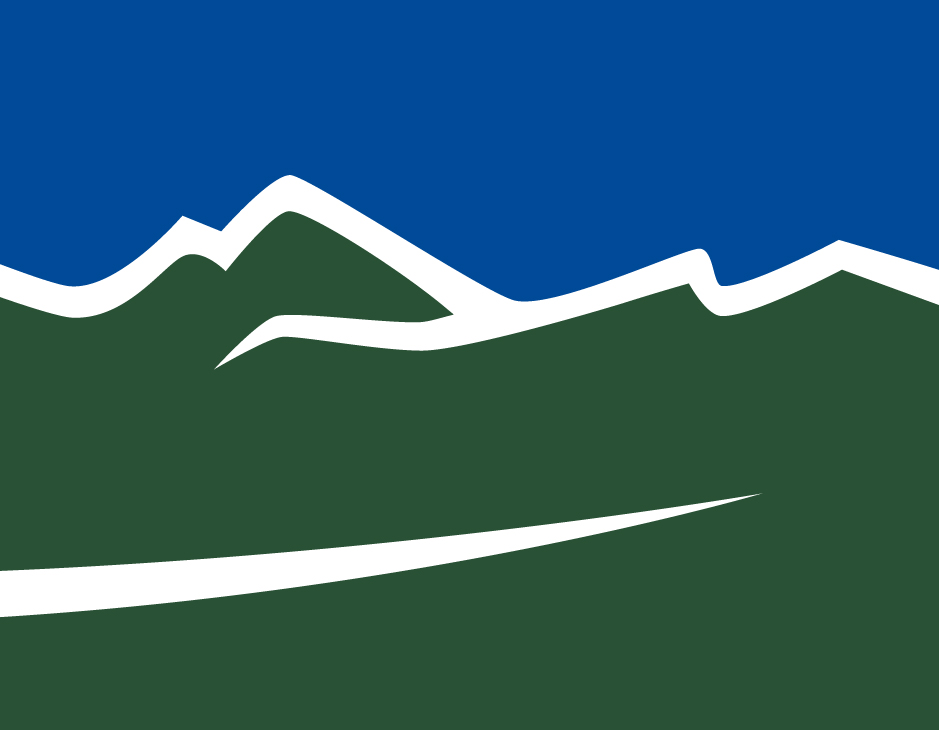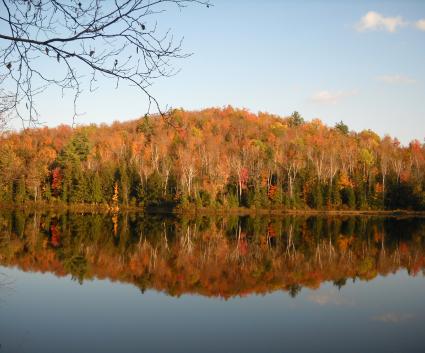Submitted by guest blogger Kim Rielly
Let me start with the following statement: I am not a strong swimmer.
I’ve always had a slight fear of the water, though I realize it is a necessary evil if I’m going to paddle anywhere. I can swim, yes, but it’s not my best subject. Frozen water is, of course, still a form of water. And a healthy fear of water has gotten me this far, so I’m going to retain my cautious approach.
Skaters gonna skate
I grew up on the shores of Lake Champlain. My parents had a house right on the lake where the beach in summer became the edge of our skating rink in winter. The house also conveniently came with my little sister, who will readily remind me that I enlisted her to check the integrity of the ice each winter before we ventured out to skate. She would go out onto the ice slowly, in small increments, brush off any snow, analyze the depth of the cracks she could see, and continue that process until she had secured enough surface for us to skate on. Then I’d join her.
In hindsight, that probably wasn’t the absolute safest procedure, but it worked out as she’s still here to skate another day.
This winter, my husband Kevin wanted me to try out one of his favorite outdoor winter sports - Nordic skating. So I gathered my courage and joined him, along with two of his experienced skating friends, for my introduction to a new way to reach human-powered high speeds in winter.
As it turns out, a healthy fear of water is a good personal trait to have should you pursue the sport of Nordic skating.
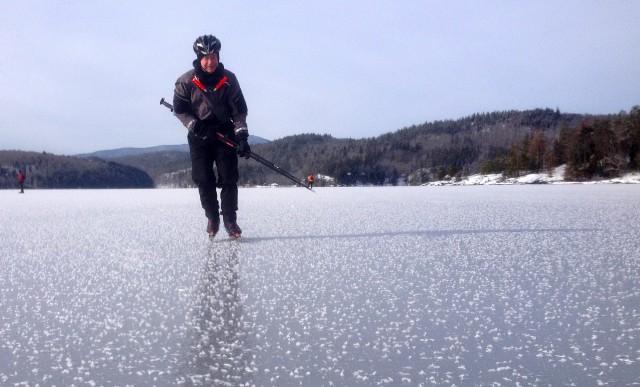
Skating tribe
Kevin has been Nordic skating for over 10 years years. In fact, in recent winters, the planets aligned and he was able to skate most of Lake Champlain’s length over the course of the season. He is associated with a group of Northeast skating junkies who flock to the latest frozen “plate” — reported via an online listserv and a flurry of texts. Like many others in the group, he goes out on recon missions to remote ponds and various locations on Lake Champlain and reports the conditions. To evaluate the ice, he has several tools at his disposal, including ice screws that he formerly used for climbing ice, as well as a good old fashioned tape measure.
On a recent Sunday, Kevin had tested a few spots in the Schroon Lake region and on Lake Champlain, and reported in that there were a couple of frozen plates that would likely be skate-ready the following morning. I decided this was my winter to try the sport, so that night I readied myself mentally in preparation for the frozen water adventure.
The gear
I still own some figure skates, some old used hockey skates, and some in-line roller blades for that matter. For Nordic skating, though, I didn’t have to buy anything new yet; I just needed my cross-country ski boots.
Nordic skating uses boot and binding technology borrowed from cross-country skiing. The blades, which come in different lengths, have ski bindings attached to them. The skater wears their comfortable Nordic ski boots and clips into the bindings just like in cross-country skiing. The bindings can be traditional 3-pin or some of the backcountry “bar” type bindings such as BC-NNN or even pilot SNS systems used for freestyle skiing (which I call “skate skiing”). Kevin has a couple of sets of blades, including a pair that my 3-pin backcountry boots fit. Those blades are shorter, 17 inches in length, which was good for my first time out. Kevin planned to use his longer, 21 inch blades with the fancy SNS system boots and bindings.
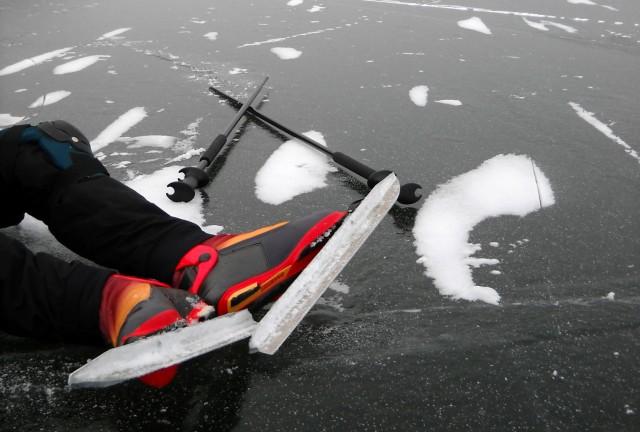
Safety first
Before we donned any footwear, though, we took some other precautions prior to venturing out on the ice. We prepped as if we planned to fall through into the frigid water. These precautions should ALWAYS be taken, though it is especially important for these early season skating jaunts.
First, I put on the typical winter outdoor layers, starting with the polypropylene base. But before the fleece and wind protection layers, I added my wetsuit. That’s right — my farmer jill overall-style wetsuit. The wetsuit provides an extra layer of insulation that would add minutes to my ability to survive in the water, plus it also adds a bit of flotation.
Next I added a couple layers of fleece and a layer of wind protection. We’d add the other safety items when we reached the ice.
We drove to Paradox Lake, between Ticonderoga and Schroon Lake, first. Today’s group was small: Kevin, Eric, Tom, and myself. We parked the cars and got suited up.
Everyone has variations of the same setup as far as safety. For instance, Eric was wearing a dry suit - a step above the wetsuits we had on. Kevin and I wore PFDs as our top layer. We all wore helmets over our winter hats - mine was my bike helmet, while the others had lighter technical helmets that covered more of their heads.
Everyone carried either one or two poles for testing the ice. There exist commercial versions of test poles that are used for both testing and propulsion and balance. Kevin, a woodworker by trade, has devised lightweight wooden poles with metal ends. He has many of them, and I was honored to be allowed to use what he calls his “elite” test pole.
The guys also all carried a special throw rope to be used in case someone fell through.
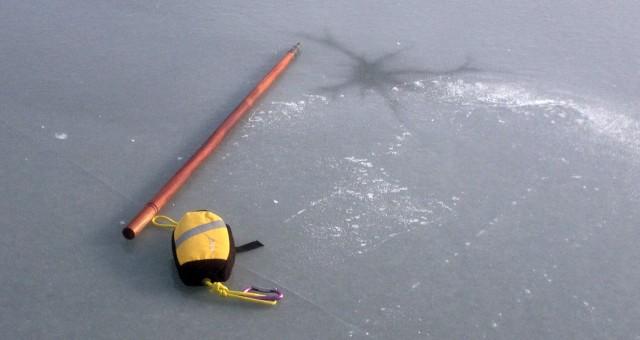
Finally, we all wore around our necks a pair of ice picks. These are commercially-made devices that can fit snug around your neck so that they are easily accessible should you go through the ice. If you fall through, you’d grab one pick with each hand and use them to stab into the ice and pull yourself out. They had a whistle attached to them, too.
Skating away
So we all put our blades on at the edge of the lake, and Tom and Eric went ahead to check on the ice. The guys all had similar bindings on their skate blades, as opposed to my 3-pin bindings, and Kevin stayed behind to make sure I was properly clipped into them.
The ice was apparently thick enough, as the guys continued to head toward the middle of the lake, using their test poles to poke hard at the ice as they went. Apparently, there is a certain amount of resistance to the sharp metal end of the pole that means that the ice is an acceptable thickness. It’s something learned; and I decided to learn how that worked for my own self preservation’s sake.
My healthy fear of water aside, I do trust these guys and their experience. In fact, Kevin and Eric have taken self-rescue ice safety courses in which they skate intentionally into open water and then get themselves back out onto the ice. I wasn’t hoping to reenact that test. So generally, I decided that my Nordic skating policy was to remain behind the three of them as we skated. My theory was that as they are heavier than I am, if they didn’t fall through, I wouldn’t either.
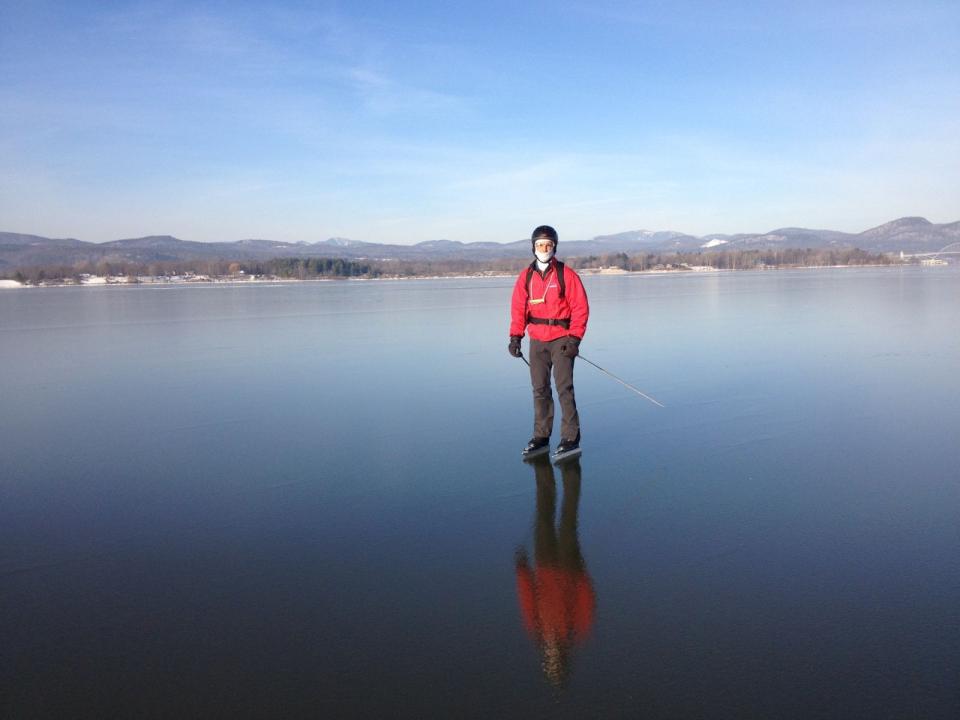
…Speaking of thin ice
We were skating along, the three of them in front of me, for a few minutes, when I heard a huge “swoooooosh” sound. I looked up to see that all three had come to an abrupt hockey stop at a line, or crack, that indicated a change in the ice. They all three chop, chop, chopped away at the ice immediately after the crack with their test poles to see how thick it was. Satisfied, they looked back and Eric said “it’s even thicker here.” I was happy to hear that.
I promptly added listening intently for that hockey stop sound to my Nordic skating policy.
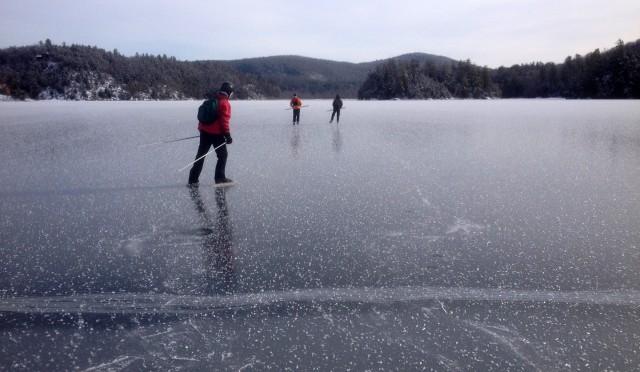
We explored the lake, perhaps 3 miles of it. The guys checked the ice as we went, hockey stopping every so often to ensure that we weren’t heading onto too thin ice. The surface of the ice varied a bit. Apparently, there is a scale of 1-10 in which 10 is as smooth as glass, and the ice gets bumpier the lower the number. We encountered what Tom told me was 9.7 (seemingly perfectly smooth ice), as well as what he categorized as being a 7 (a somewhat bumpy surface that was skate-able, but slower). The longer the skate blades, the faster you go and the more stable one is on those bumpier surfaces.
There are a couple of small islands on the lake, and as we approached one of them we did see a very dark patch of ice that appeared to be open water. As we got closer, we realized that it did have a skin of ice over it, but was definitely not weight bearing yet.
The delineation between the safe ice (more than 2 inches thick) and the darker patch was an obvious line. After watching from afar as the guys stood successfully on the thicker side of the line, I decided to use the situation to learn about the ice resistance with my elite testing pole.
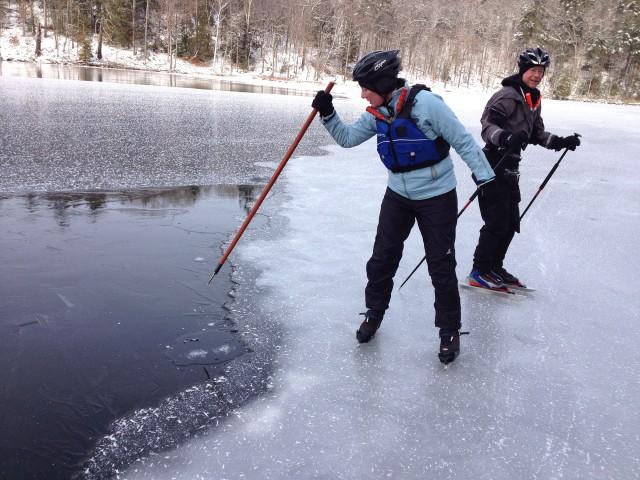
--Side note: When I posted a picture of myself in this getup on Instagram, one of my astute friends didn’t recognize what the ice picks were - she asked: “Is that a thigh master around your neck?” End of side note.--
This was a test of my healthy fear of water. It was quite disconcerting to be standing right next to the thin ice. I quickly understood that the ice I was standing on was safe; and it took 4 hard pokes to reveal a tiny hole with water in it, but without hurting the integrity of the adjacent, equally thick ice. In contrast, the elite testing pole went through the thin dark ice with just one “poke”, and water seeped up onto its surface. Instead of being afraid, I felt quite powerful and in control.
Still, I adhered to the growing list of criteria in my Nordic skating policy. We skated around on ice we’d already tested for a while — I followed them around at 10 paces or so, just the same as before. We decided we were done and headed back to the cars. On the way, since I was behind them I didn’t hear the conversation where they decided to check out a “plate” of ice near Ticonderoga on Lake Champlain before we went home altogether.
We accessed the lake just south of Fort Ticonderoga, and had to climb down over some rocks to get to the ice. It was thick where we began, and Eric and Tom headed north a bit. Kevin and I followed. A hockey stop indicated a change in the ice; this time, the outlet from the LaChute River had weakened the section between where we were standing and the Fort that we could see in the distance. I thought we should probably go home now, but the boys wanted to try to skate south for a bit.
This ice was different than the other lake. Some pieces, you could see, had formed a long time ago and were thick, but were adjoined by “plates” of ice that were significantly thinner. Per my policy, I stayed far behind the leaders as they tested with every step. At one point, we took a drastic right turn toward the New York shore and headed inland to avoid a thinner portion of ice, then continued south. In one section there were a number of visible holes in the ice - these were likely formed by gas pockets. They were iced-over, but Kevin instructed me to avoid them. He didn’t have to tell me that; I wasn’t going anywhere near. Soon after that section we encountered “older," thicker ice.
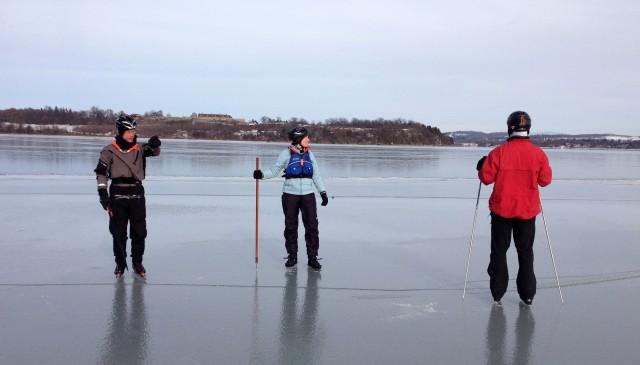
The three of them continued at a faster pace directly south. I skated along behind them confidently, but was growing tired because, well, I’m in terrible shape. We were skating against the wind, and in combination with my tired legs, I hoped we’d soon turn back.
I didn’t have to hope for long. We soon encountered a peninsula, and on the southern side of it we could see open water. We had reached the end of this plate after skating a distance of about 2 estimated miles. We began the skate back to the cars.
Now, we knew where the safe ice was, and with the wind at our backs, it was a delightful and fast return. Kevin and Eric did a bit of two-person drafting as you do on bicycles, and pulled way ahead of Tom and I. My skates were gliding effortlessly across the smooth ice at speeds I’d never achieved on skates before. That was truly what it must feel like to be able to fly!
We arrived at our starting point and climbed the rocks to get back to the cars. Safe and sound, exhilarated and, most importantly, dry!
It was like hitting your best shot onto the 18th green: a good way to end the round, and the reason you go back for more.
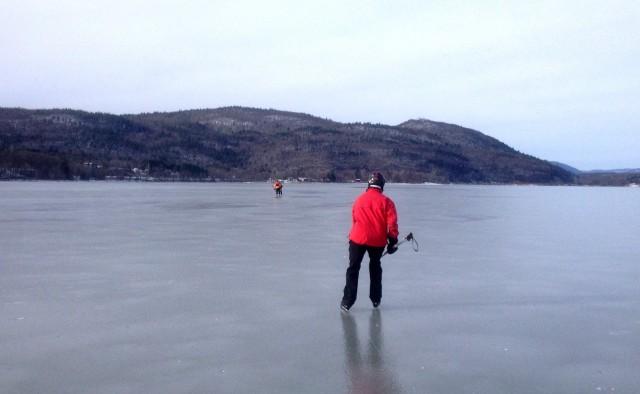
In conclusion
Nordic skating is similar in risk to mountaineering, really. Like rock climbers, the participants are prepared for the worst and respect the potential danger, which typically results in accident-free adventure. And did I mention that it feels like you’re flying?
So now at our house there are two cold-weather scenarios: if it’s cold and there’s a lot of snow, we go skiing or snowshoeing. If it’s cold and there’s a patch of smooth ice with no snow on it somewhere within 100 miles, skaters gonna skate.
And now I’m in for both.
-Kim Rielly is the former director of communications for the Regional Office of Sustainable Tourism, and a landlubber.
Check out this great resource about lake ice for recreation. Looking for other Lake Champlain Region activites? There is a ton to do here! Shop, hike, dine, or plan an overnight for your next adventure!
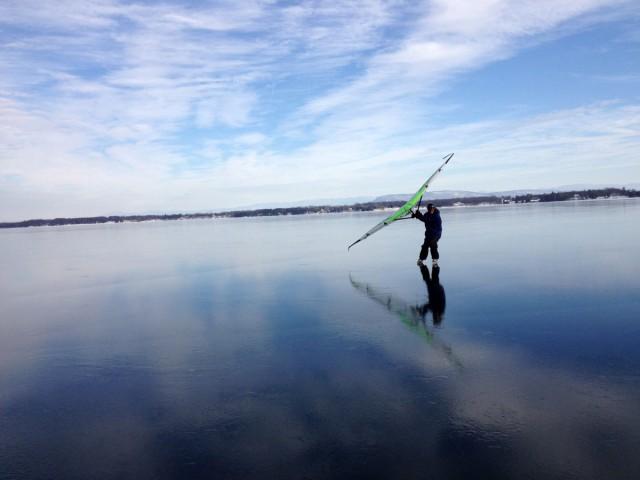
This week in ADK news:
